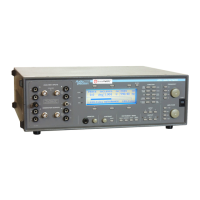Is it dBm or dBu?
Many manufacturers’ specifications show a value in dBm when the
correct unit is dBu. This special section describes the difference
between the two, and when each should be used.
In the early years of broadcasting and professional audio, most
equipment was connected for maximum power transfer from one
device to another. This required matching the output impedance of
one device to the input impedance of the next device. Due to the
transformer and vacuum tube technology of the day, the standard
input and output impedances were 600 Ω. The dBm unit, a
measurement of power relative to 1 milliwatt, was used to measure the
power transmitted from one device to another.
However, actual power meters are (and always have been) very rare in
audio. Most measurements are made with voltmeters. The power can
be calculated from a voltmeter measurement if the impedance is
known (by calculating the voltage squared divided by the impedance).
Since the early technology almost always used 600 Ω impedances,
early measurement devices assumed this impedance. Although they
did not measure power, as long as they assumed that the voltmeter
was connected across a 600 Ω load they could correctly calculate the
power in dBm. Since the voltage across a 600 Ω resistor is 0.7764
volts when it is dissipating one milliwatt, most early meters were
calibrated to read 0 dBm when this voltage was applied. But they were
not directly measuring the power; if the circuit impedance was not
600 Ω, the power calculation, and therefore the dBm measurement,
was not correct.
Modern audio equipment generally has a very low output impedance
and a very high input impedance. This transfers a negligible amount of
power but the maximum amount of voltage. The dBm, being a power
unit, is not appropriate for measurements on these devices. A more
appropriate unit is the dBu, which is a unit of voltage. In fact, it is
defined as the voltage in decibels relative to 0.7764 volts, which is the
voltage across a 600 Ω resistor dissipating one milliwatt.
3 Operation
Units Operational Overview
3-20 ATS-1 Access User's Manual

